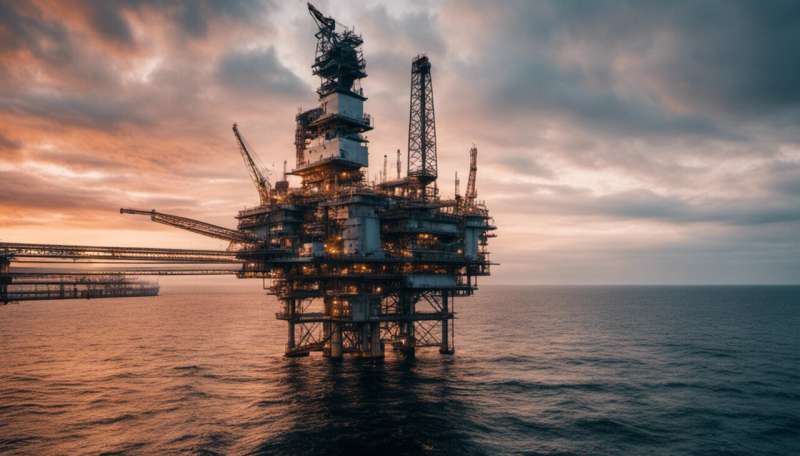Offshore wind platform prototype gets thumbs up

Winds are a boundless source of energy, growing stronger and more stable the farther away you move from the coast. While this makes offshore sites ideal for setting up wind farms, the deeper waters make such endeavors more technologically challenging. To overcome these challenges, European researchers are now developing a low-cost floating wind technology for 10+ MW wind turbines.
Supported by the EU-funded FLOTANT project, the team recently completed tests to validate its 1/50-scale prototype of a hybrid concrete-plastic floating platform. Tested in the Offshore Basin of Dutch project partner Maritime Research Institute Netherlands, the prototype withstood the simulated extreme weather common at the two sites chosen to study the novel technology: the southern coast of Gran Canaria (one of Spain's Canary Islands) and west of Scottish island Barra. The weather conditions simulated included marine currents, waves over 15 m tall and winds traveling at speeds up to 27 m/s.
Aiming at low-cost renewable energy
The FLOTANT platform is based on an innovative hybrid concrete-plastic floating substructure and also features new composites, multistranded tethers, polymer springs and lightweight power cables. Developed for floating wind installations in water depths from 100 to 600 m, the technology is expected to achieve a levelised cost of energy—the wind farm's lifetime costs divided by the total electricity generated over its lifetime—between EUR 85 and EUR 95 per megawatt hour.
Protecting platform components
Protection for the power cables forming part of the platform was achieved with the design of an innovative braided armor. "FLOTANT seeks to open the possibility to develop floating wind platforms in even deeper waters than is possible today, unlocking potential for far greater wind power resources at lower cost. The innovative braided armor cross-section design of the dynamic cabling in such extreme water depths is pivotal to the project's success," stated engineering director Mattias Lynch of French project partner and marine energy engineering consultancy INNOSEA in a news item posted on the "FLOTANT" website. The armor comprises an outer jacket made of carbon fiber-reinforced composite, and it is accompanied by a solution for sensor integration and interconnection of fiber-optic sensors for structural condition monitoring.
The dynamic power cables have been tested to validate their ability to withstand forces and motions, as have the real-time sensors incorporated into the cables. Large-scale performance and durability testing has also been successfully performed on the mooring lines and polymer springs.
"Floating offshore wind (FOW) power will be a vital component of the EU strategy as we move toward a net zero economy," observed Prof. Lars Johanning of FLOTANT partner University of Exeter. "It will also have a profound effect on the local economies in European countries, creating new jobs in the supply chain and providing a key component for our post-pandemic recovery. The development of reliable highly dynamic power cables will be an essential part of the emerging FOW industry and we are encouraged through the innovation developments that have been achieved within FLOTANT." Next, FLOTANT (Innovative, low cost, low weight and safe floating wind technology optimized for deep water wind sites) partner INNOSEA aims to finalize the floater's global performance analyses to confirm its suitability for the chosen sites.
More information: FLOTANT project website: flotantproject.eu/















